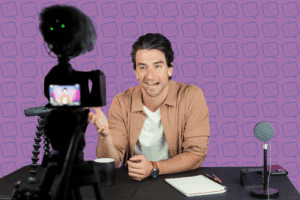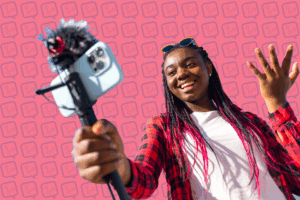The Importance of Brand Partnerships

Brand partnerships are incredibly important, especially in the growing age of social media. Marketing techniques such as radio ads and handing out flyers have become incredibly dated as more and more companies move to social media as one of their main forms of marketing. Brand partnerships take a lot of the grunt work out of this. Paying a fee or a commission to influencers to do the marketing for them allows them to stay with the times for a fraction of the cost that traditional digital marketing may cost them. For influencers, brand partnerships are beneficial because they provide a revenue stream via the monetization of your content you are already making. On top of making an income for your work, you can also get additional followers and fans because of strategically aligned partnerships as well.
Some brands may not want to work with influencers who have never had a partnership before because it can come across as though their page is not a good match for it, but once you get one on your page, it can become easier to get more as it shows you are qualified and have a strong track record with other familiar brands.
What are Brand Partnerships?
A brand partnership is a mutual agreement between two or more businesses or organizations. Via the agreement, the parties involved both gain value in one way or another. In terms of brand partnerships for social media creators and companies, an influencer may be paid for a post about the brand or receive commission of sales they drive for the company. From this post, the brand receives increased exposure or new customer acquisition. This can also help the brand break into new markets they may not directly target on their own and the influencer may receive greater exposure if the brand shares the content they published
What Can Influencers Gain from Brand Partnerships?
As an influencer, brand partnerships allow you to monetize your posts and create an additional revenue stream for you. Brand partnerships also help give you credibility when and can lead to larger sponsorships from larger companies. On the flip side, companies gain increased exposure and ideally a larger profit off sales due to increased traffic to the website or store and an increase in sales, subsequently. Not only can they gain an increased exposure, but it can lead to higher quality leads due to the influence that a creator, or influencer, has. Most often, these influencers have a specific niche within their following that falls into one of the broader categories that the brand is targeting. For example, many beauty and makeup influencers have a large female following, specifically between the ages of 18 to 30. For a lot of makeup brands this may be their target range, but this could be a harder target market to reach for other brands. For a more mature focused skin care line, a brand partnership with an influencer like Huda Kattan could expose them to a younger audience and a more niche target group.
The HOW of Brand Partnerships
Finding brand partnerships can be the trickiest part of the situation. Large influencers may be reached out to by companies, but smaller ones may have to find them on their own. For smaller influencers, it may be beneficial to reach out to companies you have seen doing sponsored posts or affiliate marketing and present why you would be beneficial to them. Outline the benefits you bring to the table, your demographic of followers, and propose a partnership that is mutually beneficial to both parties. For smaller influencers, it is also smart to keep in mind that a smaller company will be more likely to partner with you rather than a large company who only works with individuals who have over X followers/subscribers. A larger company already has a broad exposure so partnering with an influencer that has a smaller following is not as beneficial to them since there is not much for them to gain out of the brand partnership, whereas an influencer with a large following may potentially give them greater exposure and they have a stronger reputation. Another great idea for smaller platforms is to reach out to other influencers with a similarly sized platform to see who they were able to work with.
WHERE Can Influencers and Brands Find Brand Partnership Opportunities?
At InfluenceLogic, our mission is to source the best brand partnership opportunities for creators and influencers as possible. We also provide education, wisdom and other techniques to help our creators succeed when promoting a specific brand.
A second benefit of partnering with InfluenceLogic are what we call our “CSPs” or Creator Success Professionals. Our CSPs are team members who focus entirely on helping creators and influencers monetize their content and increase their income potential. When you join InfluenceLogic, you will have a CSP assigned to your account and be available to help you find the right affiliate programs, brand opportunities, and revenue opportunities in your previously posted content that you may never have known existed.






